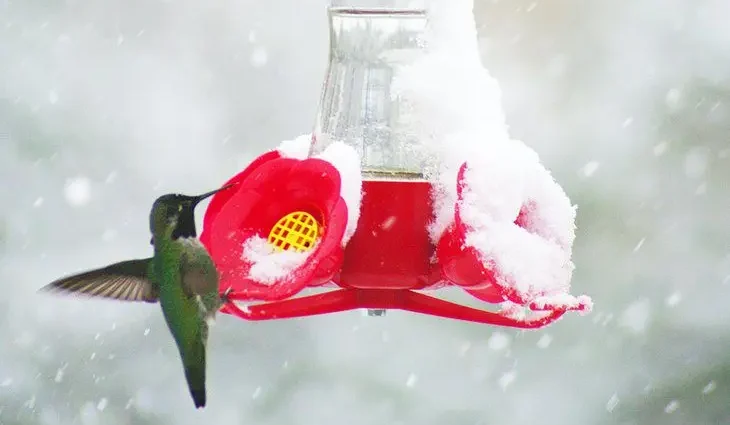Contents
Does it snow in Arizona? Absolutely. In fact the amount may surprise you – upwards of 75 inches each year in the northern regions, and at the ski resorts (yes, they have ski resorts in Arizona), the total is 260 inches, an impressive 21.5 feet. Arizona is not normally a state that you would associate with snow, but they certainly get their fair share considering how far south they are in the continental USA.
The weather in Arizona is all about altitude. In the summer, it can be scorching hot in Phoenix and low-lying areas, with temperatures above 100 degrees Fahrenheit, but drive just an hour north and up nearly 6,000 feet to the Flagstaff area, and suddenly it’s pleasantly cool with temperatures in the mid 70s. The same principles apply in the winter: when it’s cool in Phoenix or Tucson, it’s downright frosty in high places like Flagstaff or Payson.
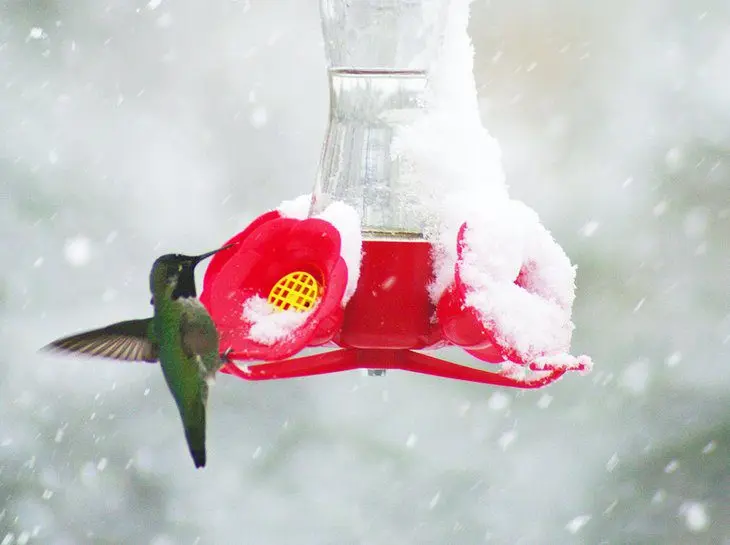
This frostiness makes for excellent snowfall when warm air from the Pacific heads over the mountains and makes its way to the desert highlands.
Generally, the northern and eastern areas of the state are where you’ll have the best chance of encountering snow. The best time to see snow in Arizona is in the winter, and the season runs from early December through until the end of March.
One of the great things about seeing snow in Arizona is that following the storms, the sun shines. The sheer intensity of the blue skies against the blindingly white snow all set against a desert backdrop is a sight that you won’t readily forget.
If you are going to be in the state in winter, here are some great places to see snow in Arizona:
1. Flagstaff
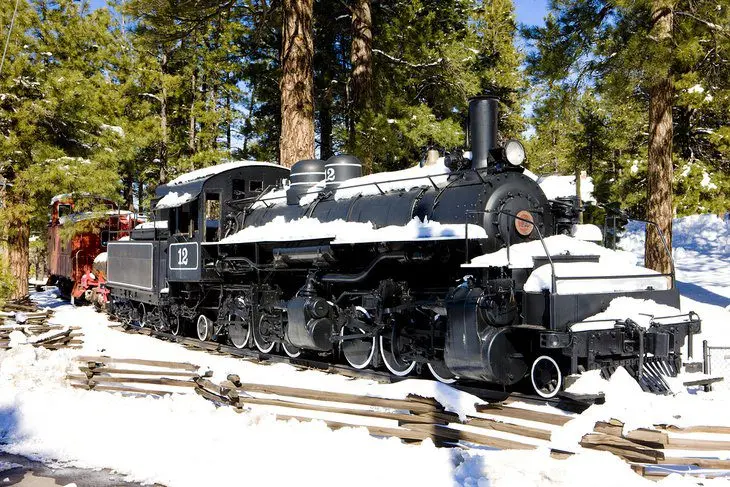
One of the most consistent places to see snow in Arizona is in Flagstaff. Owing to its 7,000-foot elevation, Flagstaff, or “Flag” as it’s known locally, receives on average around 75 inches of snow from October though until April. This means you’ll have your best chance of seeing snow on the ground in town in January or February.
In winter, Flagstaff could easily be confused for a ski town in one of the more traditional winter states. Ski rental shops, snow piles here and there, people walking around in puffy jackets with warm caps on their heads, and a cool crispness in the air give the place an alpine feel. With Flagstaff’s beautifully restored old buildings downtown, you could be forgiven for thinking you are in Telluride, Colorado or Park City, Utah.
Flagstaff is easily reached from Phoenix via Interstate 17, and the drive from desert to alpine takes just over two hours.
Read More: Things to See and Do in Flagstaff
2. Arizona Snowbowl

If you want to be 100 percent assured of seeing and experiencing snow in Arizona outside of January or February, continue a few miles past Flagstaff and head up to the Arizona Snowbowl ski area. The resort sits on the flanks of 12,635-foot-high Mount Humphreys. This mountain is actually the remains of a volcano that has eroded down over the millennia.
The weather at Arizona Snowbowl is predominantly sunny, as it snows on an infrequent basis, but when it does snow, watch out. The storms that race across the desert bump up against this huge mountain and dump copious quantities of the white stuff. On average, the resort receives nearly 22 feet of snow each year.
The base area always has plenty of snow, and the drive up to the ski hill is a great place to see snow in among the aspen and pine trees. The season runs from mid-December through to April.
Arizona Snowbowl is one of the best areas in the state to go downhill skiing. The resort has 55 named runs and eight lifts, including Arizona’s only gondola. It’s a fun place to learn how to ski or snowboard with a top-notch ski school well versed in getting first-time skiers up on their skis and heading downhill under control.
Accommodation is in nearby Flagstaff, where ski and stay packages are on offer at many local hotels.
3. The Grand Canyon
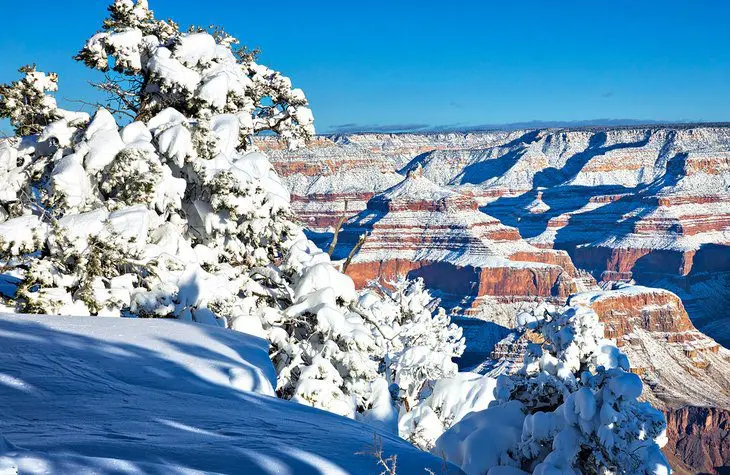
The Grand Canyon is one of the most beautiful places to see snow in Arizona. It’s also a surprisingly cold place. The south rim is at an elevation of 7,000 feet, and winter storms and winds race across the plains leading to the edge. The south rim averages just under five feet of snow each winter.
The Grand Canyon with a fresh blanket of snow covering the multi-hued rocks is a beautiful sight and not one that people get to see if they come during the summer months. There is a certain calm and quietness that descends on the place during snowfalls.
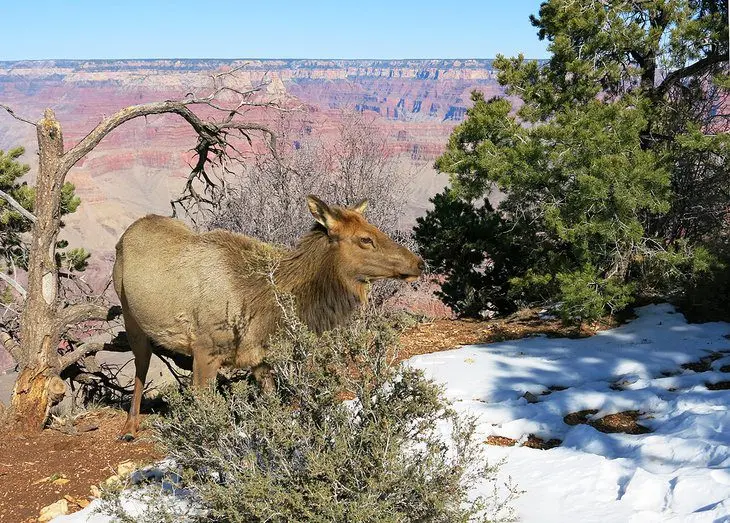
The lack of people ensures a serenity that encourages the animals to emerge from the nearby forests. You’ll have an excellent chance of seeing elk with their furry winter coats wandering along the paths near the rim.
Visiting the Grand Canyon in winter is a special treat. The lack of people, easy parking, the snow, the animals, and the photo opportunities make it a truly enjoyable experience.
Read More:
- Best Time to Visit the Grand Canyon
- Best Attractions & Places to Visit at the Grand Canyon
4. Sedona
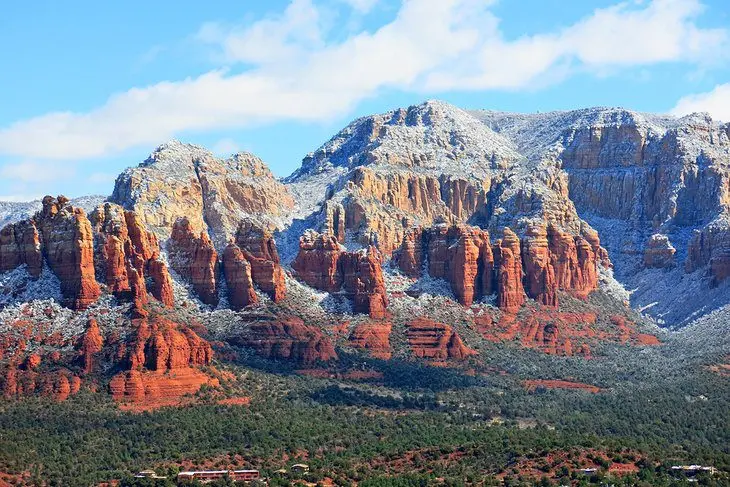
There is perhaps, no more beautiful place when it snows in Arizona than Sedona. This funky town is set in one of the most spectacular places in Arizona, with vibrant red rocks dotted with green trees and bushes.
When it snows here, which happens several times each winter, the scenery is breathtakingly stunning. The red rocks contrast with the white snow and the greenery. When the sun shines after a fresh snowfall, the town is a visual feast of epic proportions. As the snow melts, waterfalls emerge from nowhere and cascade down otherwise barren rock faces. A good place to see small waterfalls are the Seven Sacred Pools in the Soldier’s Pass area.

The melting snow also forms small pools of water in depressions in the rock. One of the most impressive pools is located on a flat rocky area above the Crescent Moon Park. Time it right here, and you’ll be able to get the iconic photo of Cathedral Rock reflecting in the water.
The drive to Sedona from Phoenix takes about two hours along Interstate 17 and highway 179.
Accommodation: Best Spa Resorts in Sedona
Read More:
- Top Attractions & Things to Do in Sedona
- Best Hiking Trails in Sedona
5. Tucson and Surrounding Mountains

Tucson sits at an elevation of 2,388 feet and is a colder place than Phoenix, which sits at the base of a wide valley. As a result, it receives a bit of snow most, but not all, years. In February 2019, the city received 1.9 inches, the largest snowfall total since Christmas 1987.
When it does snow in Tucson, head directly for Saguaro National Park. The sight of these giant green cactus with snow on the ground around them makes for an otherworldly feel.
The best place to see consistent snow in Tucson is at Mount Lemmon, the home of Mount Lemmon Ski Valley. The Santa Catalina mountains effectively catch snow and provide enough of the white stuff to operate this small, fun, and friendly resort. On a snow day, you’ll see giant pine trees, draped with white snow, and wildlife tracks through the forest. The best chance of seeing snow generally runs from mid-December to mid-April.
If you come to Tucson in late March, at this time of year, you could ski in the morning and spend the afternoon around the pool soaking up the sun at a luxury ski resort. Mount Lemmon Ski Valley is an 80-minute drive from downtown Tucson.
Accommodation: Best Resorts in Tucson
Read More:
- Top Tourist Attractions in Tucson, AZ
- Best Hiking Trails in Tucson
6. Prescott
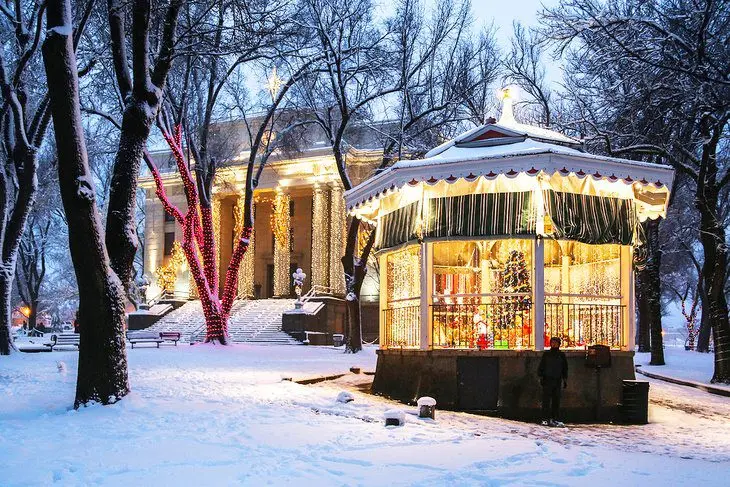
The town of Prescott is officially known as Arizona’s Christmas City. With that moniker, if you are going to celebrate Christmas in a big way, you better make sure you have some snow to go around. Fortunately, Prescott meets this requirement with about half a foot of snow falling each winter. The snow doesn’t usually stick around for very long but that doesn’t stop the city from undertaking a huge Christmas light display.
Each December, the town comes together to light the central courthouse and surrounding areas with an impressive display of colorful Christmas lights. This event is preceded by a parade full of floats; bands; and, bringing up the rear, Santa. The parade and lighting event usually takes place the first week of December.
Accommodation: Where to Stay in Prescott
Read More:
- Top Things to Do in Prescott
- Best Hiking Trails in Prescott
7. Payson

Payson is another great spot to find snow in Arizona. Located 90 minutes northeast of Phoenix, this mountain town sits in the high country of the Mogollon Rim. This high elevation leads to cool temperatures and snowfall totals in the range of two feet annually. The best time to see snow in Payson is from December through until late March.
The area around Payson is exceptionally scenic, with craggy rock outcroppings, tall Ponderosa pine trees, and burbling brooks. When the snow falls, this area becomes a photographer’s dream with a palette of white, green, and beige. Depending on road conditions, the most incredible views of a snowfall event can be had from the edge of the Mogollon Rim near the visitors center, a nice area for a drive.
Accommodation: Where to Stay in Payson
8. Pinetop
Set up in the White Mountains, the area around Pinetop is another good spot to find snow in Arizona. Pinetop is perched at an elevation of 7,200 feet and has snow from December through until April. It’s a popular winter destination for the winter sports opportunities available.
It’s cold enough up here that lakes freeze over solid. This allows for ice-fishing, a sport not normally associated with things to do in Arizona. The extensive pine forests of the White Mountains are threaded with snowmobile trails that can take you deep into the wilderness.
If you plan on coming in spring, the only way to assure yourself of snow is to visit Arizona’s largest ski resort, Sunrise Mountain. The resort is high, the base is at 9,200 feet, and the top of the mountain is at 11,000 feet – this ensures some of Arizona’s best snow. The resort has 69 runs, some of which are gentle and ideal for beginners. The ski hill is about a 45-minute drive from town. Cabin rentals are available in the forest along with regular hotel rooms in Pinetop and Lakeside.
Pinetop is roughly a three-and-a-half-hour drive from Phoenix.
9. Williams

A bit farther west from Flagstaff is the small town of Williams. This is the jumping-off spot for train trips to the Grand Canyon. Although the town used to have a small ski hill, it has been closed for a few years, but there is talk of reopening it now that nearby Arizona Snowbowl owns the property.
Williams receives around 75 inches of snow each winter, and the season runs from December through to April. On snow days, the historic main street with its brick buildings is a winter wonderland.
An ideal way to truly experience the high country on the way to the Grand Canyon on a snow day is to take the train. This historical train runs all year, and in the winter, daily departures leave Williams at 9:30am and return at 3:30pm. The tracks wind their way through forests of Ponderosa Pines on the way to the Grand Canyon station. Against the white backdrop, you’ll have a good chance to spot deer and other wildlife along the way.
At the terminal, head over to the rim of the canyon for a sight you’ll not soon forget.
Accommodation: Where to Stay in Williams
Read More: Things to Do in Williams
Map of Places to See Snow in Arizona
Does it snow in Phoenix?
It rarely, if ever, snows in Phoenix. The largest recorded snowfall was way back in 1937 when one inch of snow fell on the city. Since then, trace amounts have fallen, except in 1990 when 0.4 inches fell in December. The best places to see snow near Phoenix are Prescott or Sedona.










